A hot, muggy day without much wind. I might have gone sailing. I might have drifted and baked under the summer sun. Instead I'm doing some planning.
I connected my gps to the laptop and using Garmin's Homeport software put waypoints on both shores of Delaware Bay. You'll see that there are more waypoints on the Delaware shore, but those are mostly narrow, marshy creeks with strong tides where we would anchor only if we need to seek shelter. Using Washington Tuttle's experience as a guide book, those creeks should be avoided. Here is his description..
There were threatening clouds over the Jersey Shore so I kept a sharp lookout for inlets. The sun and the breeze were strong. I found an inlet in the marsh. The flies filled in behind my glasses, flew up my nose and in my ears. I soon left that place in a hurry.
The Jersey shore has fewer but better anchorages. I think Bruce and I both prefer the Jersey side, both because of those anchorages and because it would give us the chance to visit the nice little town of Cape May, New Jersey.
The Chesapeake and Delaware Canal is 14 miles long. Ideally we would like to start the day at dawn anchored nearby in either the Elk River or Herring Creek. Sailing is prohibited (and not practical) in the narrow, heavily trafficked canal, so we will be motoring the entire length. My guess is three or four hours to pass through the canal, starting with a tide running against us, finishing with a helping tide. It would be nice to get through the canal by late morning.
Once out of the canal we sail south on Delaware Bay, clinging at first to the Delaware shore because of the nuclear power plant and a commercial ship anchorage close to the Jersey Side. A ways south, though, with a compatible wind and tide we would like to cross over to the Jersey Shore heading southeast to the Maurice River Cove area which offers all sorts of protections in various rivers and bays. Plus there are a handful of marinas nearby in case we need supplies, fuel, etc.
If the wind and tide are not compatible and we have to stay on the Delaware side, we'll aim for the St. Jones River, with decent protection and a marina at Bowers Beach. Washington Tuttle, after leaving the fly filled creek, spent the night there. A good restaurant was there then, and I think it is still there now.
So we end up in either Cape May, New Jersey or Lewes (pronounced Lewis I believe), Delaware. We'll want to head south from there to Ocean City, Maryland. I've drawn out a few options above, everything from off the beach from Cape May to Ocean City - a very healthy 40 miles - or taking the Lewes and Rehoboth Canal down to Indian River Inlet, then going outside to Ocean City, which is what Washington Tuttle did on his circumnavigation.
With the inlets at Cape May, Indian River and Ocean City, the tides will be critical. That will be my next little bit of research.
steve
steve











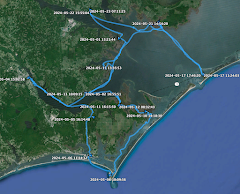
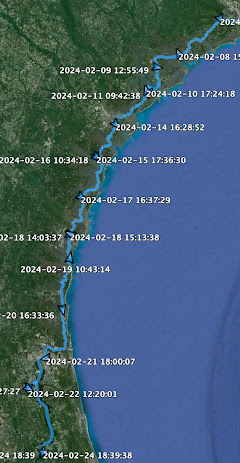

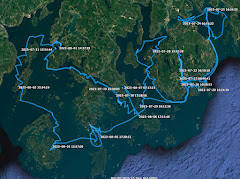

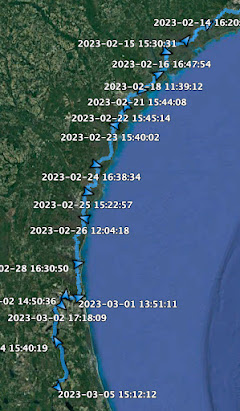


























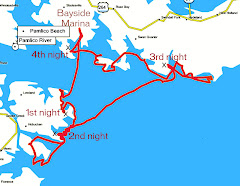


3 comments:
Yes, Lewes is pronounced more like Lewis. Interesting little town - although it's been about 18 years since I was there. But there is a little collection of very old houses that were bought and moved to the site that are kind of neat to see.
That passage across the mouth of the Delaware can be pretty rough - I've taken the Lewes-Cape May ferry a couple times, and there usually is more than a little, shall we say "losing of lunches" going on.
Steve, another minor option to keep in your quiver, depending on wind and tide, is to leave Cape May by way of the canal on the west side and cross to Lewes from there, basically following the ferry route. With a favorable wind, leaving a bit before a slack tide, it should be a fairly peaceful passage.
if the wind is against the outgoing tide it could be rather unpleasant. In that case, and the wind isn't too strong, the outside passage might be much easier. If the wind is strong, you can always decide to see more of Cape May for another day. Nice place to be holed up. One just has to stay flexible and let conditions set the course and the schedule.
Bill, Barry,
yes, watching tides and currents will be key. I'll start looking at that soon and slack tides, along with wind, will dictate much of our plan.
steve
Post a Comment